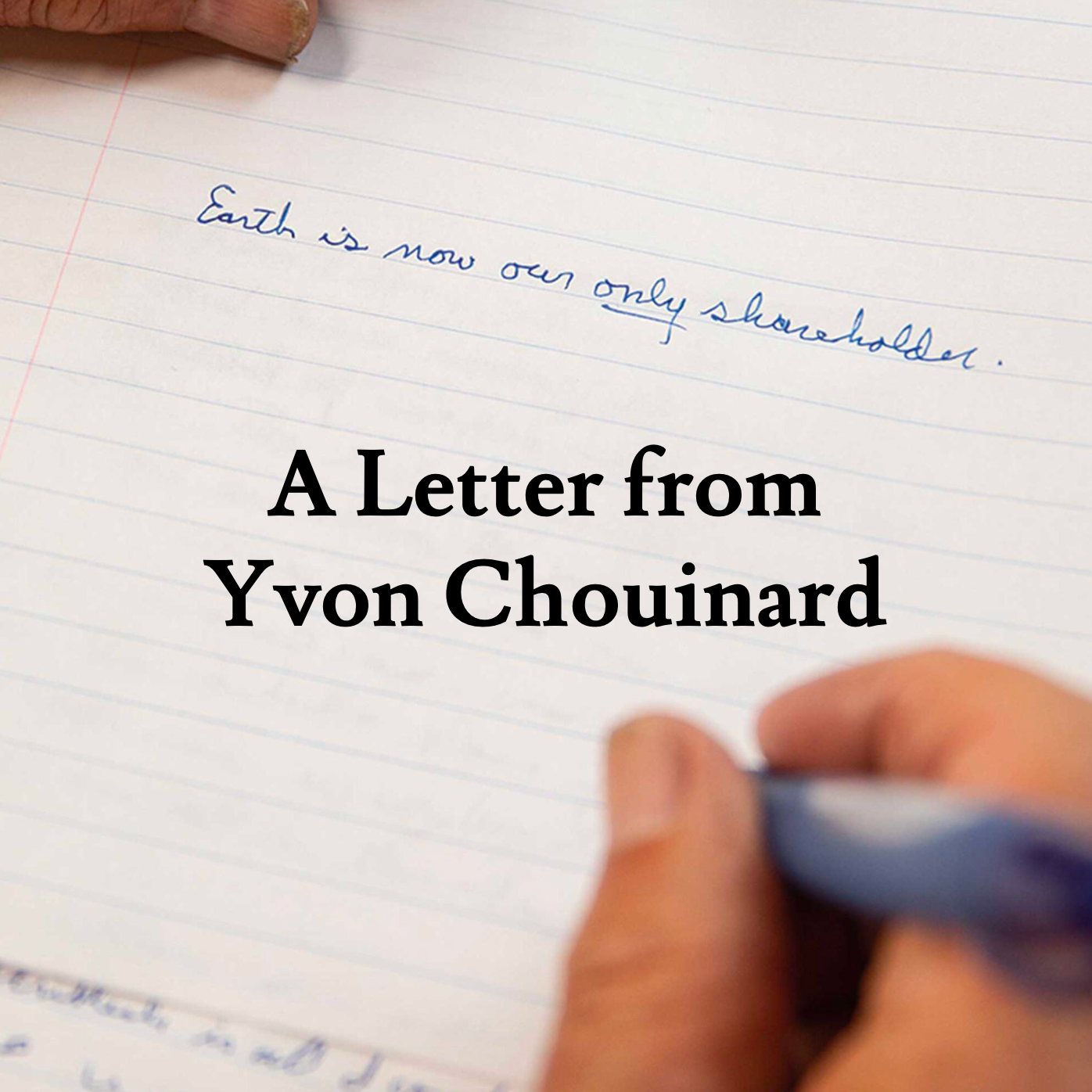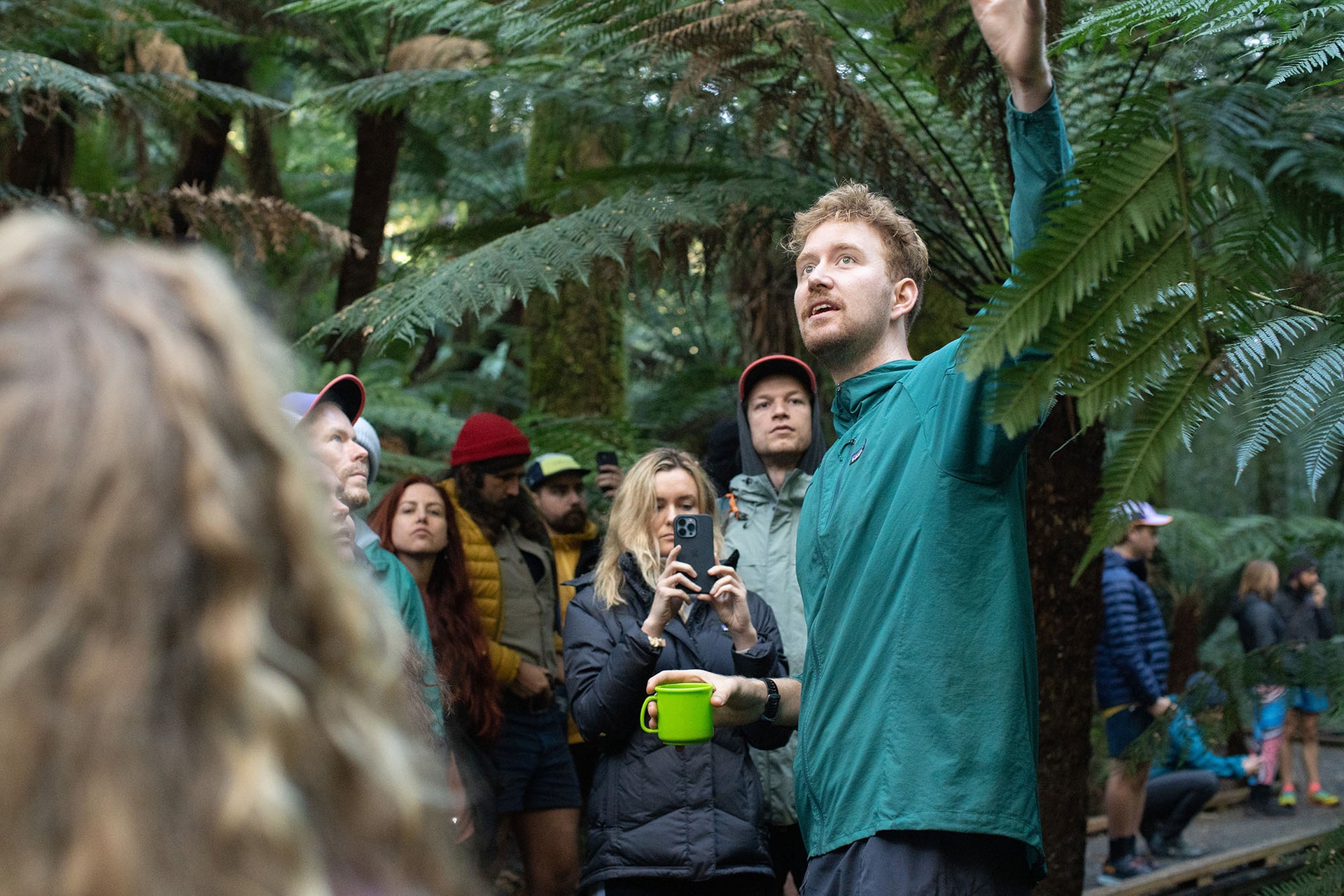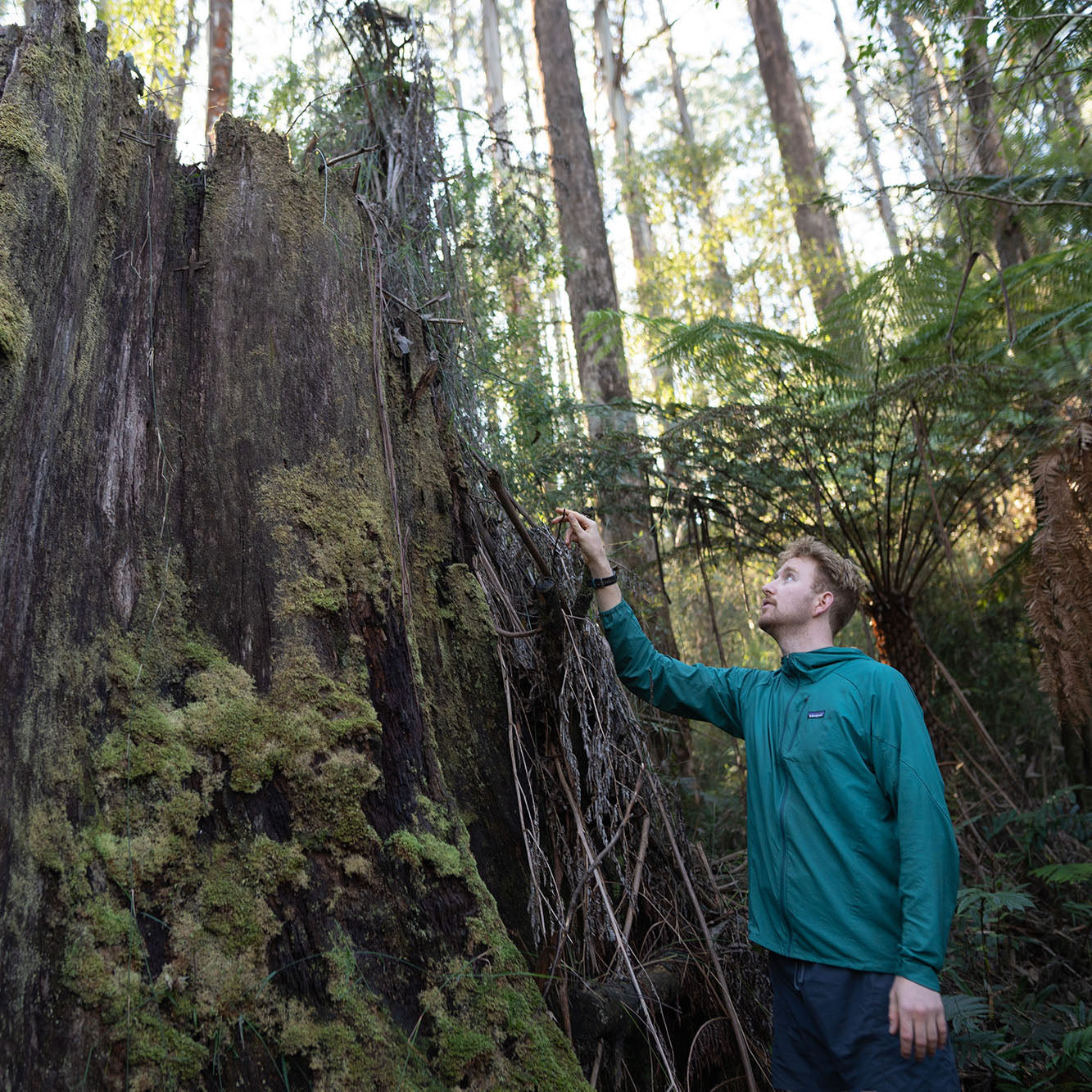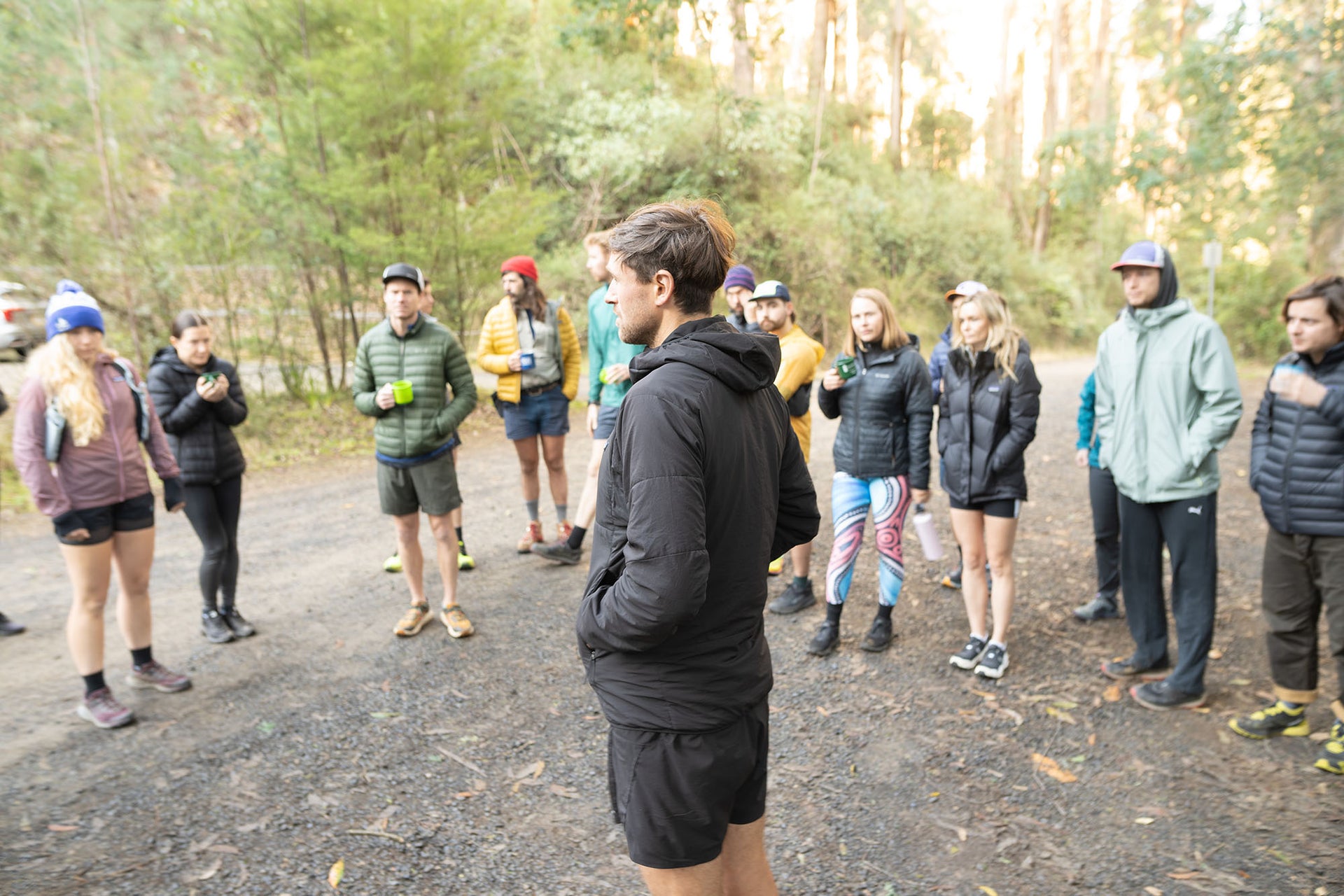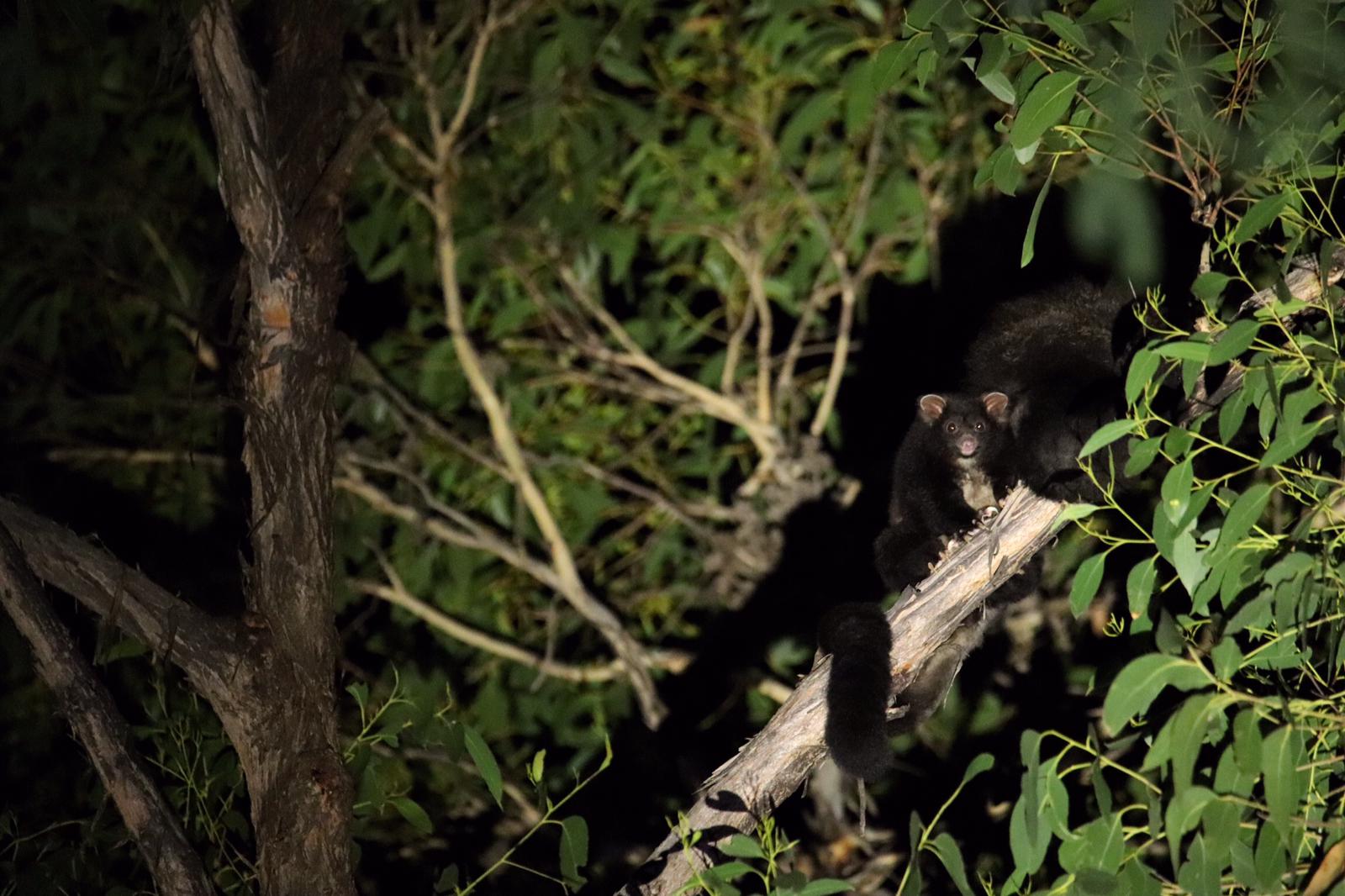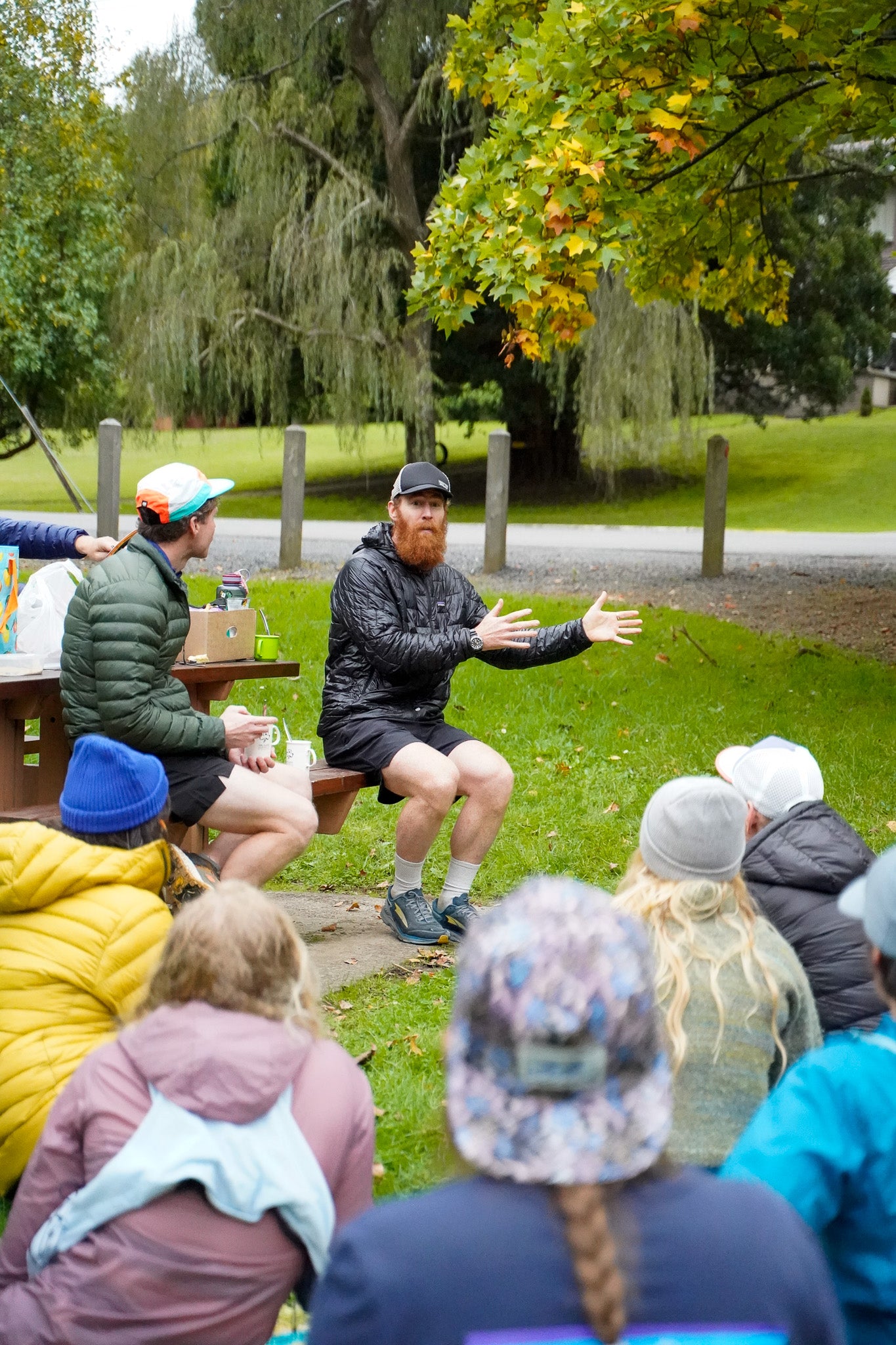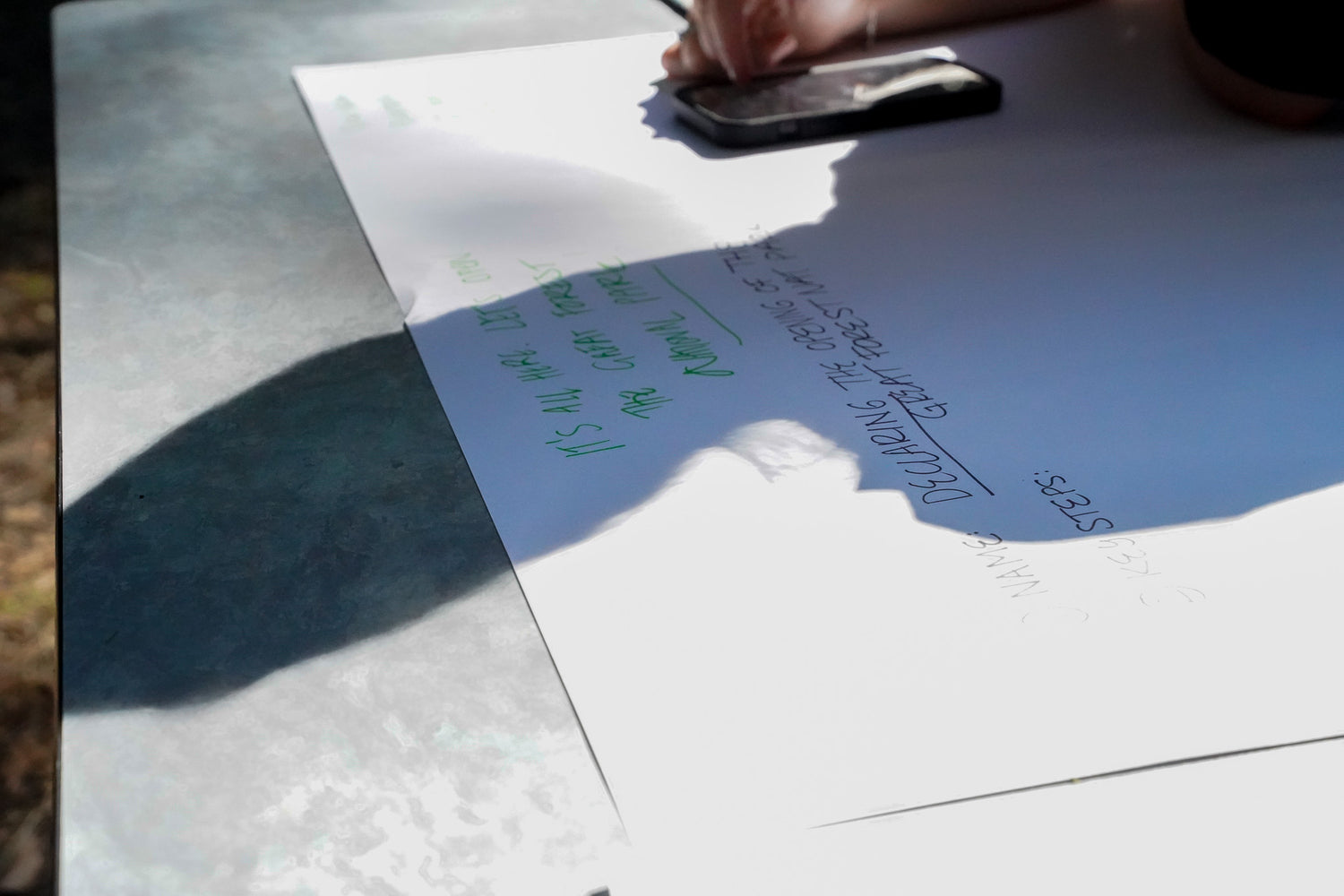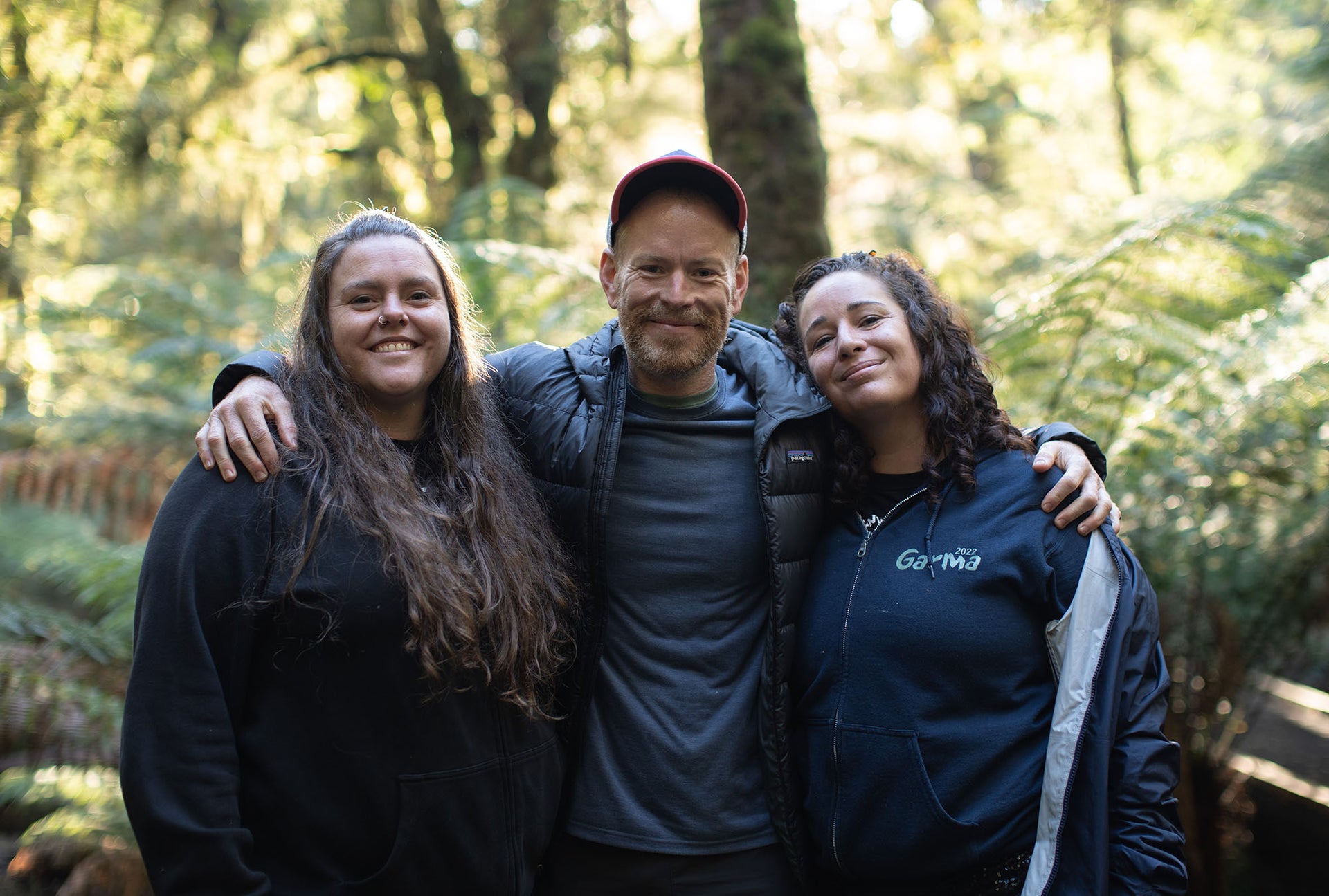Come take a walk with me, or maybe we can run. Feel the air chill about 10 degrees as we step under the shady embrace of the forest. Get a cheeky kiss from a dew drops as it rolls from leaf to branch to moss to your forehead. Have your eyes feel bigger than ever before as they try to take in the magnitude of a mountain ash, the world’s tallest flowering tree. Have a giggle as you turn your head to see the sign identifying the tallest moss in the world… it’s lucky to be taller than your thumb. Listen to the lyre bird. Would you like breakfast? We have coffee, oats and peaches or peanut-butter-marshmallow-rice-bubble-bars. We’ll join the others. Welcome to Australia’s first Footprints camp, brought to life by Wild Allies, a gathering of trail runners from across the country sharing their passion and projects to face climate change and conserve wild habitat.
This is day four of the five-day camp. Campers, mentors and facilitators spend the days running, carb-loading, hydrating, listening to activists and exploring the majestic (and no longer threatened) Victorian Highlands… or the proposed Great Forest National Park as it’s known to these folks. They’ve already had a visit from activist Nic Fox of the Victorian Forest Alliance and Warburton Environment, a visit from runner, advocate and filmmaker Beau Miles, and a visit from Erchana Murray-Bartlett, a runner who clocked up 150 marathons in 150 days. If that wasn’t enough, legendary forest advocate Sarah Rees has generously walked alongside them through the week.
The day begins in Toolangi State Forest and starts with a stroll through Wirrawilla Rainforest Walk, where conserved old growth and premium tourism infrastructure is on display.

